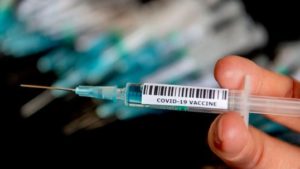Masks, distancing — and tests. |
| Reducing the spread of Covid-19 over the next several months — while vaccines are being distributed — has the potential to save more than 100,000 American lives, as I explained earlier this week. So how can we reduce the spread? |
| Some of the ways are well-known: consistent messages from national leaders; mask wearing; hand washing; and fewer indoor gatherings. But there is one other promising strategy, many experts believe: |
| Much more testing, especially tests that return results almost immediately, rather than a day or two later. |
| These tests, often known as antigen tests, could sharply cut the number of new infections by causing many more people who have the virus to enter quarantine. Germany and Italy have used antigen tests recently to reduce new cases. Several U.S. colleges have also used blanket testing — including slower-turnaround tests — to minimize outbreaks. |
| “There’s clear evidence that test-and-isolate works,” Paul Romer, a Nobel Prize-winning economist at N.Y.U., told me. As Jennifer Nuzzo, a Johns Hopkins epidemiologist, said, “It can make a big difference, provided it’s coupled with other things.” |
| To get a better sense of rapid testing, I went through it myself this week. I called several pharmacies and clinics in my areas until I found one offering a test to anybody who wanted one, and I drove there on Tuesday afternoon. |
| Within minutes of my walking in the door, a pharmacist — wearing a gown, gloves and face shield — was sticking a swab up each of my nostrils. It was unpleasant but not horrible. An hour later he texted me, “Test was negative,” along with a photo of a hand-held device whose screen showed “CoV2: -” |
| Imagine if all Americans could take multiple tests every month — including right before any risky behavior, like flying or seeing relatives. And imagine the tests were free, rather than the $100-plus I paid. A program of mass testing “can enable the United States to begin to achieve normalcy within weeks,” Michael Mina, a Harvard epidemiologist who is pushing for more testing, has written. |
| It’s important to note that these antigen tests are imperfect. Even after a negative test, people need to remain careful. Yet tests don’t need to be perfect to reverse the virus’s recent growth — and save thousands of lives. The key, Mina told me, is reducing the average number of new infections caused by each person with the virus to fewer than 1.0, from roughly 1.3 now. |
| Why isn’t the U.S. doing more testing? There are a few reasons. |
| The F.D.A. has been slow to grant approval for new tests. The Trump administration has been slow to spend the money that Congress has allocated for testing. And Congress may need to allocate more money; mass testing could cost a few billion dollars a month — still a small fraction of the cost of recent proposed virus bills. |
| To go into more depth on Covid testing, I recommend this new Times guide. “Ideally, you should be able to get a coronavirus test whenever you want it,” Tara Parker-Pope and Katherine J. Wu write. |
Alex
Koordynator projektu
0




